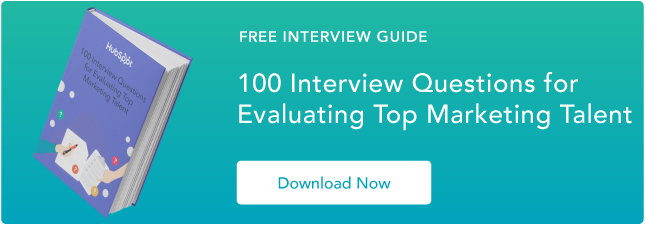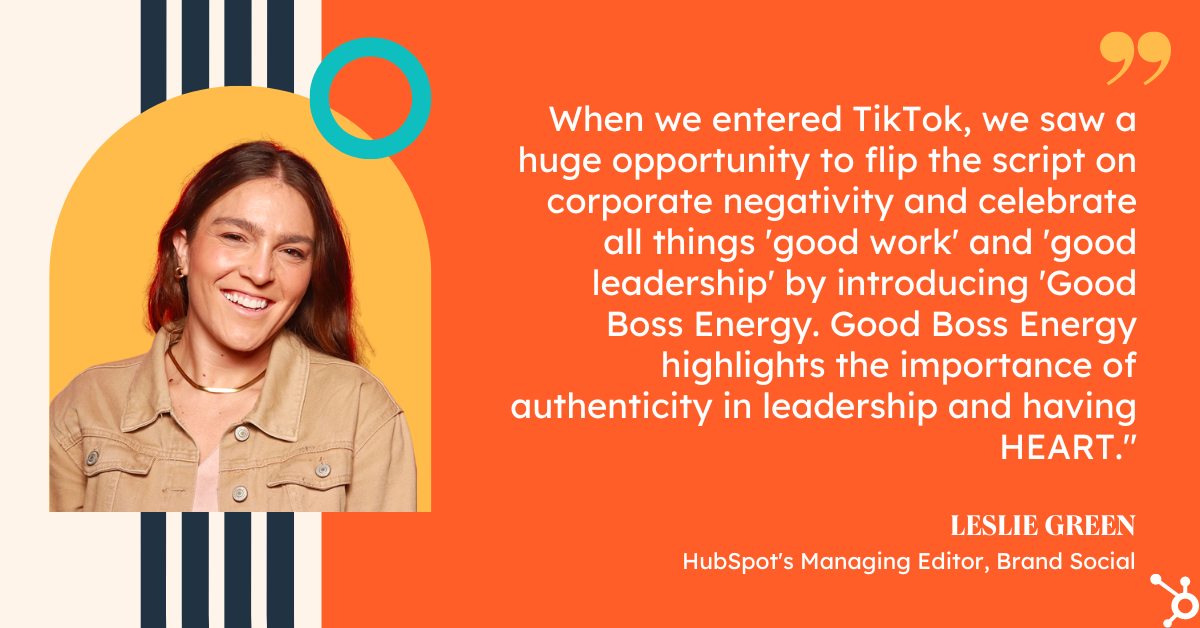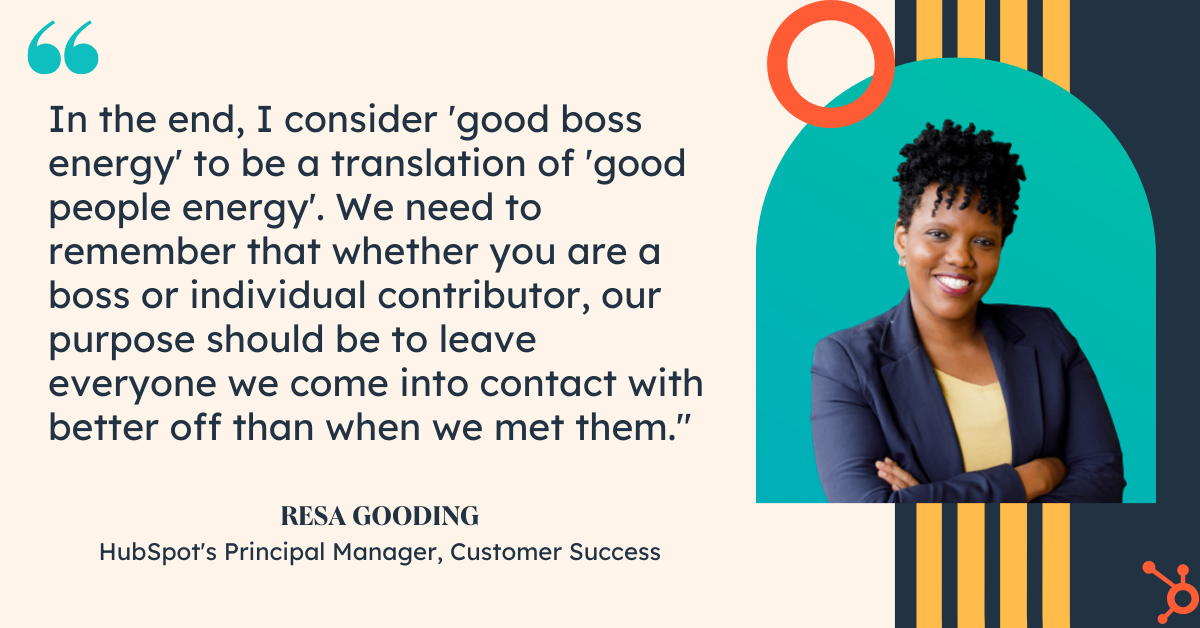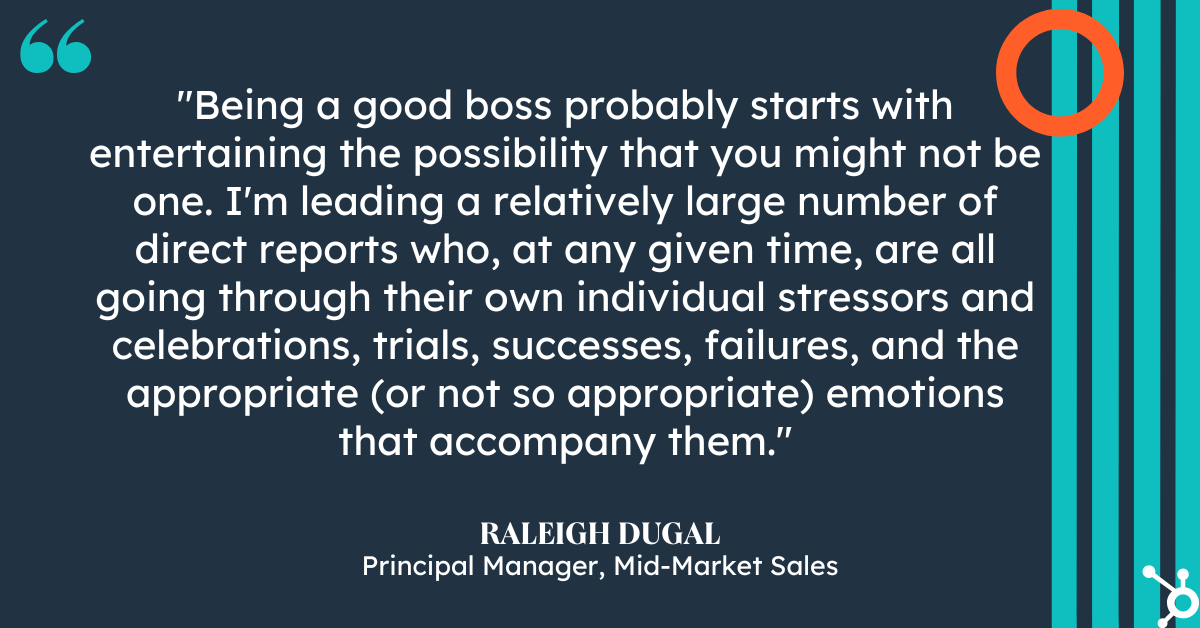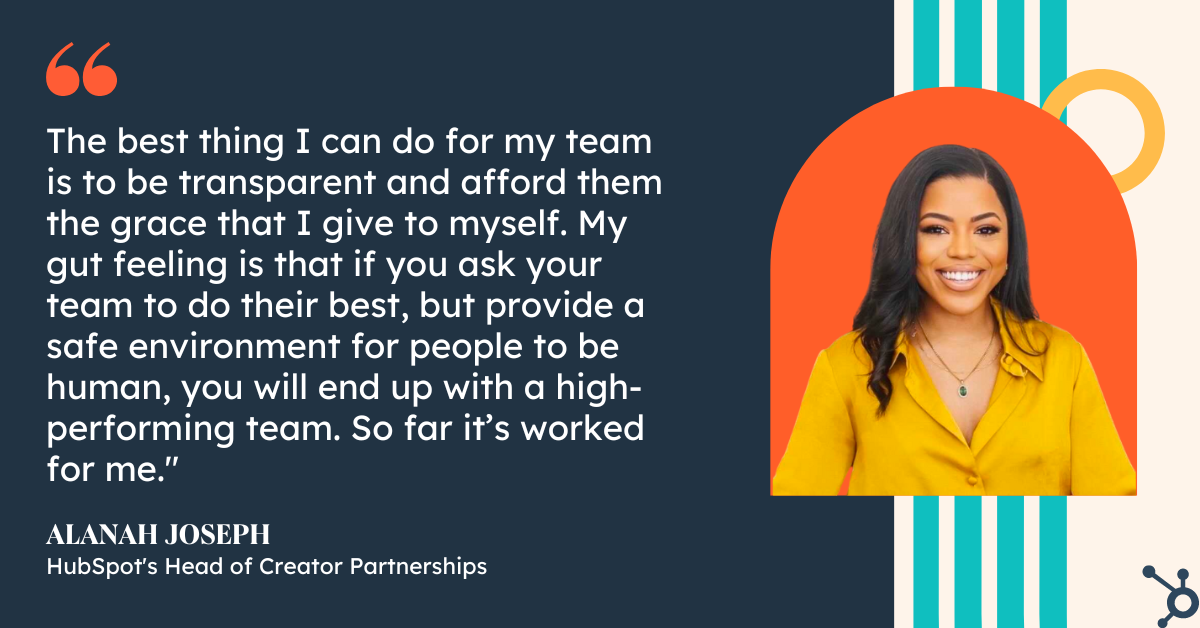Asking “How is everyone?” at the beginning of every meeting isn’t always the best ice breaker to encourage team bonding. Sometimes, having a fun ice breaker game or activity can aid in that connection.

The best ice breakers have the power to strengthen coworker bonds, stimulate better brainstorming sessions, and create an atmosphere of inclusivity. To get the most value out of your team bonding moments, we’ve compiled a list of the best ice breaker activities and games for the workplace.
Next time you get together with your team, use one of these games instead of asking “How is everyone,” and you’re sure to hear some better, more insightful responses than “I’m good.”
Looking for a specific type of ice breaker? Jump to:
Zoom Icebreakers
1. Paint a Picture, Build a Story

Image Source
Best For: Virtual Fun
In this ice breaker, playoff your teammates’ artistry and create a scenario of their masterpieces. Gartic Phone gives you a short time frame to sketch photos based on other players’ prompts — and can result in some hilarious artwork.
The more nonsensical the prompt, the funnier the drawings become. You’ll also get brownie points if you save and share some of the funniest drawings and share them with the team on Slack afterward.
Instructions
- Go to https://garticphone.com.
- Enter a nickname and choose a character avatar.
- Click Start.
- Click the Invite button and share the link with your colleagues.
- When the game starts, everyone will be prompted to write a fun sentence.
- Everyone will receive someone else’s sentence and have the opportunity to draw it.
- Everyone will receive someone else’s drawing and then guess what the original sentence was.
- Enjoy the hilarious results!
2. Guess That Drawing
Best For: Virtual Fun
Drawasaurus is one of my favorite online drawing games to play with colleagues. Players get to choose from three random prompts to quickly interpret and draw their vision. Other players can score more points for identifying the word the fastest and take turns going until the timer goes out.
Instructions
- Go to https://www.drawasaurus.org.
- Enter a nickname (don’t worry; this won’t automatically start a game).
- Click + Create a Room.
- Set the room as Private, choose a room name, set a simple password, and choose the number of max players.
- Share the link from the URL bar with your colleagues.
- The game will start once everyone designates themselves as Ready to Play.
- One by one, everyone will choose one word to draw, and the others will get to guess the word.
- The person who guesses correctly the quickest earns the most points. Enjoy!
3. Alphabet Brainstorm

Best For: Virtual Fun
Thinking off the top of your head is a lot harder said than done in Scattergories. The host of the game can choose from topics as broad as foods and countries or as weird as “Things Granny would say.”
Each round, the game will highlight a random letter of the alphabet and let players come up with any noun or phrase that starts with said letter. The best part — players can dispute answers amongst each other to take the win. This is a perfect icebreaker for your overly competitive colleagues.
Instructions
- Go to https://scattergoriesonline.net/new-game.xhtml.
- Choose the categories you’d like for the game, such as “Animals,” “Long words”, and “Things with tails.”
- Click Create new game.
- Choose the game letters (most will be pre-chosen), the number of players, and the number of rounds.
- Choose when a round ends (we recommend giving everyone 30 to 60 seconds).
- Under “Who can join,” click Invited friends.
- Click Create new game.
- Copy the link and share it with your colleagues.
- Everyone will have an allotted time to fill out several categories with words that start with a single letter.
- Play all the rounds and see which one of your colleagues has the most expanded vocabulary!
4. Show and Tell
Best For: Team Bonding
A rather straightforward ice breaker, team members can share an object they love over Zoom. Whether it’s a prized-collectible or an item that sparks nostalgia, there’s plenty of stories waiting to be told.
Instructions
- Let your team know ahead of time that you’ll be doing a show and tell.
- At the start of the meeting, give everyone 5 minutes to find the item that they’d like to show (Option: Have them turn their camera off).
- Start with a random team member or yourself.
- Have everyone popcorn to someone after they show their item, or go alphabetically.
- Enjoy seeing the eclectic items in your team members’ homes!
5. Bucket List
Best For: Team Bonding
Outside of the workplace, your teammates are people with aspirations and goals you wouldn’t know about from the average coffee chat. Have team members share some bucket list items they want to achieve in the future.
Not only can these be inspirational, but they also open the floor for team members to encourage one another to pursue their dreams, too. It’s a particularly uplifting team-bonding activity that will bring your team even closer together.
Instructions
- Start with a random team member or yourself.
- You or your teammate will share one bucket list item.
- Have everyone popcorn to someone after their turn, or go alphabetically.
- Enjoy!
6. Share the Love
Best For: Team Building
While dispersed teams may not have the chance to share a handshake or hug, you can still share the love amongst each other in this icebreaker. Say something lovely with another team member, and it could be anything you want as long as it’s respectful and in good judgment.
For each person that receives a kind message, they will be the next one to share a message to a member of the group who hasn’t received one — ensuring everyone gets an equal amount of praise. Shout them out for their helpfulness in a project, for the energy they bring to the team, or for their lovely smile.
Instructions
- Let your team know ahead of time that you’ll be doing this activity.
- We recommend pre-pairing teammates in a spreadsheet so everyone can come prepared with something to say.
- Start with a random team member or yourself.
- Have everyone popcorn to someone else after their turn, or go alphabetically.
- Enjoy!
7. Arts and Crafts
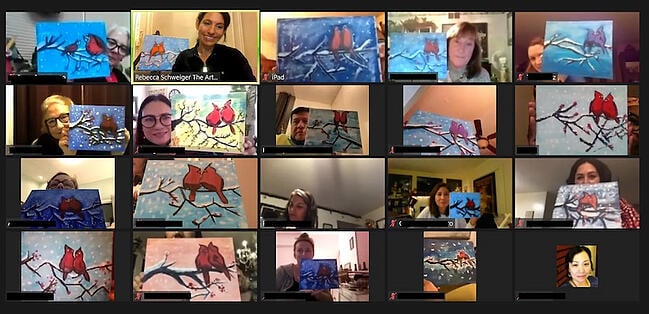
Image Source
Best For: Virtual Fun
Making something with your team can be a great opportunity to learn something new and keep decorative mementos in your space. Have everyone follow the same instructions to make a craft like simple origami, a drawing, or painting by a designated instructor in the Zoom call or YouTube tutorial.
Instructions
- Have everyone fill out an interest form for the event.
- Set a date and have folks RSVP so that you can more accurately calculate the price per person in the next step.
- Hire a Zoom arts and craft instructor from a business such as The Art Studio NY or KraftyLab. Alternatively, have a team member volunteer to teach, or find a YouTube video, which will be free.
- We recommend taking 30-60 minutes to complete this activity.
- At the end, have everyone show their work.
- Have fun!
8. What Do We Have in Common?
Best For: Team Bonding
This icebreaker is best suited for new hires who may feel more reserved as they virtually meet the team.
Find common ground and get the conversation going with your team members. Have a manager or team leader start the conversation by sharing something they have an interest in, like popular TV, music, foods, or whatever they love to get everyone thinking. Popcorn it over to the most enthusiastic team member with that same interest and have them share a new one.
Typical icebreaker questions can get people to say a sentence or two about the subject, but if you’re passionate about it, you’ll see more personality come out from the most unexpected colleagues in the call.
Instructions
- Start with a random team member or yourself.
- You or your teammate will share an interest, such as a TV show or hobby.
- Someone with that same interest should either drop a note in the chat or raise their hand.
- Their turn will begin, and they will share a new interest.
- Enjoy!
9. Name That Tune
Best For: Virtual Fun
Music brings people together, and you’d be surprised to learn how many of your coworkers are raving about the top trending song on TikTok or Spotify.
Take turns whistling, tapping, or even playing an instrument (if you gave one) to the tune of a popular song and have your teammates guess the name. Figure out who’s a fan of the classics by clapping and stomping to the rhythm of “We Will Rock You” by Queen, or do whatever it takes to help your colleagues recognize your favorite tunes.
Instructions
- Start with a random team member or yourself.
- You or your teammate will hum, whistle, sing, or tap the rhythm of your favorite song.
- Team members should drop their guess in the chat.
- The correct guesser gets the turn. If no one guesses correctly, popcorn your turn to someone else.
- Enjoy!
10. Themed Meetings
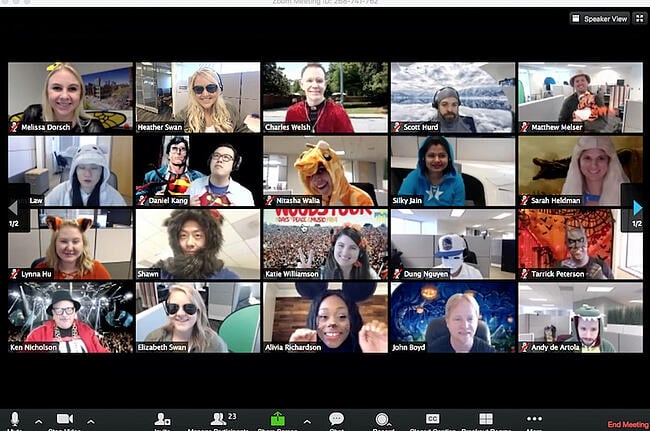
Image Source
Best For: Virtual Fun
Hosting themed meetings is the best icebreaker for the holiday season. Share a laugh and snap photos of you and your colleagues dressed up as elves with Zoom backgrounds at the North Pole, or in your spookiest costumes for Halloween.
Make sure your theme is chosen in good judgment. As some holidays have cultural ties, keep this icebreaker for more commercial holidays.
Instructions
- Let your team know ahead of time that you’ll be doing this activity.
- Share either what costume you’re wearing or something special about your ensemble (such as, “I’ve had this ugly sweater since 1999”).
- Have everyone popcorn to someone after their turn, or go alphabetically.
- Enjoy!
12. Guess the Childhood Photo
Best For: Team Bonding
In need of a wholesome icebreaker? In your next Zoom meeting, tell everyone to send the leader a cute (or hilarious) photo from their childhood and randomly throw them all into one slideshow.
When it’s complete, the leader will then share their screen and have the group guess which team member is in each photo. Try not to blush too hard when they get to yours.
Instructions
- Let your team know ahead of time that you’ll be doing this activity.
- Share the presentation a week prior to the meeting so team members can add their childhood photos.
- At the start of the meeting, share your screen.
- Proceed slide-by-slide and have team members either throw their guesses in the chat, or write their guesses privately on a notepad.
- At the end, have everyone share which slide belonged to them.
- Enjoy!
13. Zoom Photo Ops
Best For: Team Building
In this icebreaker, you’ll first want to ask everyone involved if they’re comfortable having their photos taken before the meeting begins (I know I’d like a heads up in case I was wearing an old band shirt instead of my usual business casual outfits.)
You can try to get everyone to make silly or scary faces, or even try to mimic the Brady Bunch title sequence. There are plenty of poses or facial expressions to capture, especially if you’ve got a kooky team to work with.
Instructions
- Let your team know ahead of time that you’ll be doing this activity.
- At the start of the meeting, give instructions for the pose team members should take (Silly? Spooky? There are many options!).
- Take a screenshot of the Zoom window.
- Share the photo via your team messaging app and pin it for posterity.
- Enjoy the memories!
14. Hobby Webinar
Best For: Virtual Fun
During weekly video chats, you can designate one coworker to teach the team how to engage in a hobby they’re good at — something you don’t need to be in-person to do.
This could range from showing how to do quick origami, do a magic trick, or even giving a pointer or two on couponing from your coworker who always keeps an eye out for the latest deals.
Instructions
- Reach out to individual team members to find the most suitable instructor.
- Alternatively, create a running spreadsheet with team members’ names and their hobbies.
- Manually choose an instructor for the upcoming meeting, or pick a name randomly using a tool like this one.
- If supplies are needed, let your team know ahead of time.
- Have the instructor lead the meeting from the start, ideally with a time limit on the activity.
- Enjoy!
Ice Breakers for Meetings
15. One Word
Best For: In-Person Team Building
The One Word ice breaker allows you to provide initial context into a meeting’s topic, and get everyone in the right mindset for discussion.
For instance, let’s say you’re leading a meeting on culture. Tell the groups to describe work culture, or your office culture in particular, in one word. Once they’ve shared with their groups, you can invite them to share their word with the entire room.
This game encourages everyone to think about a certain topic in smaller groups ahead of time, which could increase participation during the meeting.
Instructions
- Divide meeting participants into smaller groups.
- Tell them to think for a minute or two on the meeting’s topic.
- Have every one share with their group one word that describes the topic, then allow them to popcorn their turn.
- Enjoy the diverse responses!
16. Pop Quiz
Best For: Team Building
To successfully loosen everyone up and get them in the right mindset for a meeting, you might consider putting a short Pop Quiz on the board.
If your goal is simply to encourage team bonding, your quiz can be more fun — like, “Match the lyrics with this 80’s song.” However, you might also use the Pop Quiz as an opportunity to introduce participants to the meeting’s theme.
If you’re discussing company changes, for instance, maybe you’ll start by quizzing team members on company history facts (e.g. “What year was this company founded?”).
Instructions
- We recommend not letting your team members know about this activity ahead of time.
- If you’re on Zoom, post the question on the chat or share it via your screen. If the meeting is in-person, write it on the board.
- Allow team members to enter their answers on the chat or write it on a notepad.
- Whoever gets it right may get a small prize or bragging rights.
- Have fun!
17. Birth Map

Image Source
Best For: In-Person Team Bonding
This activity is short, but delightfully telling — you’ll find out where your team members were born without needing to ask and having everyone take a turn. You’ll create a physical map where your teammates can place a pin on their birthplace. As the map fills up with pins, people will learn about how diverse their teammates might be.
Instructions
- Place a map and a set of pins at the front of a large conference room before a big meeting.
- As people walk in, ask them to place a pin where they were born or raised.
- Allow some time at the end of the meeting for your colleagues to walk up and look more closely at the map.
- Save the map or take a picture.
- Enjoy the team keepsake!
18. Movie Pitch
Best For: In-Person or Virtual Fun
Perfect for larger groups and movie fanatics, this icebreaker is as crazy as you make it. Divide players into quads and give them 10 minutes to devise the plot of the next award-winning film. You can give them constraints by designating genres like horror, action, comedy, thriller, and more.
If your organization is meeting to brainstorm ideas for specific projects, go ahead and incorporate the topic into their movie pitch prompts to get the creative juices flowing.
Instructions
- Divide team members into groups.
- Have every group come up with a plot for the next blockbuster.
- Each group should get a turn to share, and they might even act out parts of the plot.
- Have fun!
19. Stretch Break
Best For: Team Wellness
Maybe the week has been busy for you and your team, or it’s going on your fourth meeting of the day. If this is the case, have everyone take a breather and stretch before the next big meeting begins.
Someone can either lead by example, showcasing some arm and back stretches, or just let everyone freestyle. You’d be surprised how a little movement can wake up and help people get work done.
Instructions
- Designate a team member ahead of time to lead the stretches (or lead them yourself).
- Take 5-10 minutes to go through a round of stretches.
- Enjoy the much-needed break!
20. Rose, Thorn, Bud
Best For: Team Building
In meetings, it can be hard to communicate or understand everyone’s perspective on a project unless everyone has the floor to say what’s on their mind. With the Rose, Thorn, Bud icebreaker, team members can quickly convey what’s on their mind by sharing three bits of information:
Rose: A recent positive happening like a personal highlight or win
Thorn: A challenge or roadblock they need support on
Bud: An idea for the future they’d like to share, or excitement for events in motion
Instructions
- Ensure you have the right team size for this activity. Less than 10 people would work best.
- Start with a random team member or yourself.
- Have everyone popcorn to someone else after their turn, or go alphabetically.
- Enjoy!
21. Frivolous Debate
Best For: In-Person or Virtual Fun
There’s nothing like some lighthearted banter to get everyone warmed up before a meeting.
For this icebreaker, everyone will debate a silly topic and chime in with an equally silly answer and reasoning. Make a statement like, “Cats are better than dogs,” and, “Summer is better than winter,” or let chaos ensue by declaring that pineapple belongs on pizza (because it does).
Instructions
- Designate a team member ahead of time to share their popular or unpopular opinion.
- Have everyone chime in one-by-one on whether they agree or disagree.
- Every team member should popcorn their turn, or you can go alphabetically.
- Have fun finding out who agrees with you (and who does not)!
Quick Ice Breakers
22. Would You Rather
Best For: Team Bonding
A classic game played at summer camps everywhere, “Would You Rather” is an excellent, quick ice breaker for the workplace. Next time you’re settling into a meeting or team bonding outing, take turns going around the table and asking each person a “Would You Rather” question.
Here are a few “Would You Rather” questions to get you started:
- Would you rather only have summer or winter for the rest of your life?
- Would you rather go on a hike or see a movie?
- Would you rather never use social media sites and apps again or never watch another movie or TV show?
- Would you rather have a horrible short-term memory or a horrible long-term memory?
Instructions
- Designate a team member ahead of time to share their “Would You Rather” question.
- Have everyone chime in one-by-one with their answer.
- Every team member should popcorn their turn, or you can proceed alphabetically.
- Enjoy!
23. Accomplishments Before 18
Best For: Team Bonding
Accomplishments Before 18 is an engaging and unique way to encourage team members to share fun or interesting stories with one another. Before a meeting, simply go around the room, and ask each person to share one accomplishment they had before they turned 18.
Undoubtedly you’ll get some of lesser importance, like “I bought a skateboard,” but you never know what hidden skills you might discover in your colleagues.
Instructions
- Start with a random team member or yourself.
- Have everyone chime in one-by-one with their answer.
- Every team member should popcorn their turn, or you can proceed alphabetically.
- Enjoy!
24. Two Truths and a Lie
Best For: Team Bonding
One of the more classic ice breakers in the list, Two Truths and a Lie can be used anywhere from family parties to company events.
For instance, I might say, “I once auditioned for the TV show Zoom. I have three brothers. I ziplined in Switzerland once.” Coworkers can take turns guessing which is the lie. (FYI, I have two brothers, not three, so that’s the lie. Unfortunately, I auditioned for Zoom.)
Two Truths and a Lie is a fun and engaging game, and more importantly, it can help your team learn facts about one another, so they can begin forming deeper bonds.
Instructions
- Ask each person to brainstorm three “facts” about themselves — two of the facts will be true, and one will be a lie.
- Have team members guess which is the lie.
- Whoever guesses correctly gets bragging rights.
- Enjoy!
25. The Handshake
Best For: In-Person Fun
One of the first ways you get to greet somebody in the workplace is with a handshake.
This ice breaker lets individuals ease up and have a little fun without a hassle. It’s simple — everyone will create a fun, creative handshake.
If you have more time on your hands, have the pairs split up after showing off their super cool shake and make even more creative ones with new partners. It’s hard to play these games without sharing a laugh, which is something we all could use in the workday.
Instructions
- Divide the group into pairs of two.
- Have them make the most creative handshake they can in a couple of minutes.
- If desired, have everyone rotate partners.
- Have fun!
26. Bad Joke Contest
Best For: In-Person or Virtual Fun
This icebreaker won’t take your team time at all to complete if you give them a heads up to prepare. In the Bad Joke Contest, you’ll have everyone recite the corniest joke they can muster and have everyone vote on who was the most cringeworthy.
Beware, some coworkers have impressively bad dad jokes saved up for these moments, so the competition will be fierce.
Instructions
- Let your team know ahead of time that you’ll be doing this activity.
- Start with a random team member or yourself.
- Have everyone popcorn to someone after they tell their joke, or go alphabetically.
- Have everyone vote on the corniest joke either via Zoom poll or by keeping tabs on a notepad.
- Don’t forget to laugh — or cringe!
The list continues below — read on to find fun icebreaker games, ice breakers for large teams, and more.
27. Tall Tales
This icebreaker game will have everyone thinking on their feet. In Tall Tales, each player will make up three sentences to add to a running story. The third sentence has to have a plot twist starting with, “Suddenly…” before rotating to the next.
Every player will have a chance to put their own spin on the budding story, and can even try to throw the next participant for a loop with a crazy situation.
28. Say Your Name Backwards
This game is pretty straightforward, or straight backward.
Every player will write their name on a slip of paper backward, fold it, and place it into a bowl. Once all the slips are collected, someone will draw one out of the bowl and read to the rest of the players what’s on the slip. Whoever can guess their coworker’s name correctly gains a point, and whoever has the most points at the end wins.
29. Jenga
Jenga is considered a classic game for a reason, and because it’s easy to play and put away. Have your team take turns pulling woodblocks out of your Jenga tower and share a laugh when it all comes toppling down.
30. Frown King or Queen
Make it a competition to see which of your team members has the gnarliest frown, and bestow upon them the title of Frown King or Queen. Bonus points if you actually go out of your way to make a paper crown.
You’d be surprised how hard it is to maintain a frown when surrounded by your favorite colleagues, not to mention how funny they’ll look during the game.
31. The Envelope Please!
In this icebreaker game, have everyone write 10 facts about themselves on paper and place them each into their own envelopes. The envelopes are to be shuffled and chosen once at a time by the leader to read aloud to the rest of the group.
The rest of the players will then guess the identity of the envelope in hand — but they must be confident in their answer as each player only has one chance to guess per envelope.
32. Random Talent Show
A talent show is one thing, but a random talent show is another. Have your coworkers take turns showing their cool party (or office) tricks. And let’s face it, you’ve been trying to find the right opportunity to show someone you could lick your elbow for a while now.
33. Celebrity Impressions
For this icebreaker game, the leader will tape a label to each player’s back with a celebrity or household name. Once that’s complete, every player will then ask each other yes or no questions about the traits, recent news, or talents of their celebrity label.
If a player can identify their own celebrity correctly, they can remove the label from their backs and continue mingling if they wish.
34. Quick Portrait Gallery
You don’t have to be Picasso to have take part in this icebreaker. The instructions are simple, every group member will be randomly assigned a different person to draw in a couple minutes. It’s a fun way to bond and share a giggle here and there over everyone’s work of art.
35. Sound Ball
Sound Ball is an imaginative icebreaker that gives everyone a chance to get moving and energized.
In this icebreaker, the leader holds an imaginary ball in their hand and “throws” it to other players, making whatever sound they think it would with that gesture. Whoever “catches” the ball next must repeat the sound made, then throw the ball to another person making their own unique sound. It sounds crazy, but it’s easy to get into the flow of it.
36. Beatboxing
This is probably one of the silliest icebreakers in this list, but it’s definitely worth trying for the fun of it all. Have one team member start making a noise you’d hear in a song like percussion and have others gradually add to the beat.
Who knows, if the beat sounds good enough you all could consider making an acapella group.
Large Team Ice Breakers
37. Charades
Charades is a game fit for large teams, both in-person and remote.
In this icebreaker, players need to communicate with team members to identify a noun of a certain category. Have everyone divide into two teams, and have one player at a time pantomime (act out) the subject for their own respective teammates. Whichever team gets the most points, wins.
38. Red Light, Green Light
I bet anyone who watched Squid Games in 2021 is familiar with this game, and if you haven’t, the rules are simple (and the stakes are much, much lower.)
The players in this icebreaker game will line up on one side of a room and a designated leader will be instructed to say either, “Red Light,” or, “Green Light”. Players in line are to try and walk to the other side of the room when the leader says, “Green Light”, but once the leader says, “Red Light”, everyone must freeze or be kicked out of the game.
39. Guess Who
Similar to Charades, Guess Who is a great icebreaker where you can mimic famous people — or even your coworkers.
Have someone write down well-known names on sheets of paper and then hand them off one at a time to a team member. They’ll have to act out the behaviors, facial expressions, or even the iconic “I’m flying” scene from Titanic.
40. Icebreaker Bingo
Icebreaker Bingo is a great way to bond with large teams because it can include as many people as you want.
You can use a free icebreaker bingo generator and personalize each of the squares on a subject you’re all discussing for the day, or for anything everyone can feel included.
41. Hot Take
For this icebreaker, everyone can take turns in sharing their hot takes and either bond with their coworkers who agree or debate their naysayers.
Of course, you want the topics to be fun and lighthearted, so keep them to topics that aren’t controversial and opt for statements like, “Cheese isn’t all that great.” if you’re a madman.
42. “Most Likely To ___”
Remember those high school superlatives? This is like that but a little less embarrassing. Have coworkers read through a list of “Most likely To” titles and assign them to one another. During the game, everyone can chime in or give reasons as to why someone deserves the title, and the group consensus will be the final decision.
It’s important to note that no two people will have more than one tile to ensure everyone is included.
43. Whisper Down the Lane
Whisper Down the Lane is an icebreaker game where team members form a larger circle and share a random message whispered into the ear of someone to their left. This game can get funny pretty quickly, as a whisper down the lane can get misinterpreted over and over again.
44. Simon Says
Simon Says is a game as old as time, but it never stops being fun. The leader of the group will instruct players to do an action beginning with the words, “Simon says…” like, “Simon says touch your knees,” or, “Simon says grab your elbow.” Whoever doesn’t do the actions proclaimed will be booted out of the game.
The real trick is for the leader to confuse players by giving fast Simon Says commands, then giving them a command without saying the keywords. This could work like, “Simon says touch your hips, Simon says hop on one foot, Simon says touch your nose — touch your ears!” Whoever does the action (like touching your ears) will be booted out of the game because it wasn’t a Simon says action.
45. Things in Common
This simple icebreaker is fit for groups of people meeting each other for the first time. All that has to be done is mingle with one another to find some things you have in common, and try to form groups based on those attributes. Bonus points if you can learn the names of those who you relate to, and brownie points if you can relay all their names when asked.
46. Team Jigsaw Puzzle Competition
For this game, you’ll need to prepare by purchasing two identical jigsaw puzzles. Divide your large group into teams of two and set a timer to see which group can work together to make the most progress on their respective puzzles.
47. Clump
Have team members walk around and mingle amongst themselves in a large, open space. The leader of the icebreaker will then yell out a random number under 10. Every person mingling will then have to quickly form a group in the size of the number called.
Gradually people will be made to exit the mingling space or find a seat until the last person standing wins.
Ice Breaker Games for Small Groups
48. Fun Questions
Asking fun questions is an easy and effective ice breaker game. To play, simply go around the room and have each person provide an answer to a fun question. The questions are up to you, but if you’re stuck, here are a few ideas:
- If you’re stranded on a desert island and have the option of bringing three items with you, what three items would they be?
- If you could be any animal, what would you be and why?
- What was the first concert you ever went to?
- If you could have any celebrity over for dinner, who would it be and why?
These questions serve two purposes — first, they allow your coworkers to get into a sillier, more creative mindset. Second, they encourage conversation on topics typically reserved for outside the office, which enables members of your team to get to know one another on a deeper level.
Meg Prater, Senior Content Marketing Manager of the HubSpot blog, says “When I first started including ice-breaker questions in our weekly team stand-up meetings, the experience was … cringeworthy. It felt like exactly what it was: organized fun. But we kept at it. I listened to feedback and tried to incorporate it into better ice breakers.”
She continued, “For example, some folks on our team don’t watch a lot of T.V. and felt a little excluded when we’d fall down a rabbit hole of shows we were binging. Keeping the ice breakers inclusive keeps everyone engaged. Now, our ice-breakers can take 15+ minutes to get through and yield some of our biggest laughs and revelations of the week.”
49. Personality Quiz
This ice breaker can promote team bonding, and it’s one of the easier options on the list. Simply choose a brief personality quiz on your phone or computer (if you’re stuck, here’s a list), and pull it up on a projector or send the link to everyone.
Once everyone has completed the personality assessment, have each colleague mention one thing they agree or disagree with from their results. This game allows your team members to gain a new perspective on their peers, and it’s also a fun and easy way to get an interesting conversation started.
50. Who is it?
Have everyone write a unique, strange, or unexpected fact about them on a piece of paper. Then, put the pieces of paper into a hat and mix them around. Pull from the hat and read each fact.
Allow the team to try and guess who wrote it. After they guess, ask the employee who wrote the fact to identify themselves and give any further context if necessary. This could be a great way to get to know surprising new things about your teammates.
51. Marshmallow Challenge
Tom Wujec, a business visualization expert, initially presented his Marshmallow Challenge at TED. To play, you simply divide your team into groups of four and give each group 20 sticks of spaghetti, one yard of tape, one yard of string, and a marshmallow. Whichever team can build the tallest structure, wins — the trick is, the marshmallow must be on top.
There are a few reasons this game works as both a great ice breaker and a team-building exercise. First, the most successful teams are the groups of people who don’t spend time competing for power.
The game forces your colleagues to work collaboratively when brainstorming potential solutions. Second, the Marshmallow Challenge encourages people to think quickly and offer alternative solutions when their initial idea fails.
With the Marshmallow Challenge, you can strengthen your team’s brainstorming and problem-solving skills, and your team can also have some fun. A win, win.
52. Scavenger Hunt
At HubSpot, we conduct a scavenger hunt for new hires on the first day of their training. It’s fun and encourages collaboration, but additionally, it can help employees learn their way around the office.
Fortunately, you can conduct a scavenger hunt for your team even if they’ve worked at your office for years.
Simply split up your team into groups, and give each group a shortlist of items to find — if you work in a smaller space, maybe you can hide some funny items around the office ahead of time. You might even provide an incentive for the winning team, like a $50 Amazon gift card.
A scavenger hunt is also an exceptional opportunity for cross-department interaction. Consider reaching out to managers from other departments and creating groups of employees who don’t often get to work together.
53. No Smiling
This game is simple and meant to energize your team. Get your colleagues in a circle and ask one volunteer to sit or stand in the middle. Tell the volunteer that they can not laugh or smile, regardless of what happens. Then have each other colleagues take turns telling the volunteer a work-appropriate joke.
The goal of the volunteer is to hear a joke from every colleague around the circle, while the goal of the other team members is to make the volunteer laugh.
This icebreaker can be helpful in new-employee or management training to lighten the pressure of starting a new job. It can also be helpful as a way of lightening the mood on teams that regularly deal with stressful projects or situations.
54. This is Better Than That
Aside from being a fun team activity, this might be a great energizer for sales employees or others that regularly pitch, market, and sell products.
Ask your team to find four to seven items around the office and bring them to one room. These items could be something they use daily, like a pen or a chair. However, you should encourage them to find items that are more odd or unique. This will make the game more challenging.
Line the items up and split the group into sub-teams. Task each team with picking an item they would use to survive if stranded on a desert island.
Tell team members that they cannot pick more than one and must assume it is the only item they will have on that island. Allow the teams time to deliberate and then ask them to present the item they chose and why.
Virtual Icebreakers for Dispersed Teams
55. Choose Your Favorite
For this icebreaker, all you have to do is answer the question about your favorite things. You’ll ask your team to choose their favorite movie, song, T.V. show, etc. The question can change every week.
This icebreaker helps your team get to know each other even when they work remotely and can spark conversation on what everyone likes or dislikes.
56. Trivia Game
If you’re looking for a remote icebreaker that’s more of a game, and less discussion-based, you can host a trivia game.
Kahoot is a trivia platform you can use for free (hosts up to 10 people). To get started, all you’ll need to do is sign up for a free Kahoot account.
Then, you can choose a featured trivia game to play. To run this remotely, you’ll want to share your screen with your team. Everyone will need to have a separate device to use so they can enter the game and submit their answers.
57. Share an Embarrassing Photo
This is one of my favorite icebreakers because it’s a fun way to get to know your team. For this game, have everyone bring in an embarrassing photo and tell the story behind it.
Have your team members share their screen or send a file to the team leader to share with everyone.
To make this more interesting, you can have people guess whose photo it is before your team member shares their story. Doing this icebreaker is a great way to build connections remotely.
58. One Word Pulse Check
For this icebreaker, have everyone on your team go around and share a word or phrase that represents how they feel that day.
Christina Perricone, former Senior Content Marketing Manager on the HubSpot blog, says this is her favorite icebreaker.
“The person sharing gets to decide whether or not to elaborate, and everyone listens without response. The purpose of the exercise is to give people a chance to release and/or reveal emotional setbacks, obstacles, wins, highlights, or anything else that might be impacting how they show up to work that day. It provides a space for participants to bring their entire self to work and it gives the team context for how to support that team member that day,” Perricone adds.
59. Meet my Pet
Nothing fills a meeting with smiles like photos of colleagues’ furry friends. Take turns showing off the cutest pictures and videos of your pet.
For those who don’t have any, they can either make a joke pet (the infamous pet rock) or share a dream pet they would have.
60. Let’s Make a Mixtape
This icebreaker works by asking your coworkers to choose one of their favorite songs from a certain genre. Once everyone has their song in mind, have someone compile either a Youtube or Spotify playlist of everyone’s choices, and share the link with everyone in the group afterward.
Not only is it fun at the moment, but then everyone has the chance to discover new artists and tunes they haven’t heard of before.
61. Emoji Mood Guesser
With this icebreaker, you’d ask everyone in your team to drop the most accurate emojis of their current mood or state of mind in a chat box (assuming they’re using Zoom, Microsoft Teams, etc.) Everyone can guess what adjective someone is trying to convey, and can even share why if they want to.
Would You Rather Ice Breakers
62. Food Would You Rather Questions
You’d be surprised how passionate some of your coworkers can get over food. When asking “Would You Rather” questions, ask about various savory or sweet food staples and which they would prefer to eat forever.
Example: “Would you rather eat only cake forever or eat pasta forever?”
63. Travel Would You Rather Questions
There’s plenty of destinations on your coworkers’ radar, get to know them a little better by getting to know where they want to go and why.
Example: “Would you rather travel to only island destinations or mountainous destinations?”
64. Talent Would You Rather Questions
Explore more uncommon talents and see which your coworkers would like to have in this type of questionnaire.
Example: “Would you rather your special talent be opera singing or in playing the banjo?”
65. Super Hero Would You Rather Questions
There are hundreds of superheroes from Marvel and DC, and chances are your coworkers are familiar with them, too. Ask which hero they would like to be and why based on their stories or abilities.
Example: “Would you rather be Ironman or Captain America?”
66. Super Power Would You Rather Questions
On a similar note to heroes, find out what powers your coworkers would rather have and why. Bonus points if you ask them whether they’d label themselves as a hero or villain.
Example: “Would you rather have super speed or super strength?”
67. Sport Would You Rather Questions
Your coworkers may be involved in sports outside of work, and maybe they’re fans of different leagues and teams. Ask which sports they’d rather play and see which they’d prefer and why.
Example: “Would you rather play basketball for the rest of your life or football?”
68. Fashion Would You Rather Questions
Even if your coworkers aren’t tuned into NYFW, they’re sure to recognize some of the most popular clothing brands. Ask them which they’d prefer to dress in and why.
Example: “Would you rather wear only Louis Vuitton or Gucci?”
69. TV Would You Rather Questions
With tons of streaming services to choose from, your coworkers are bound to have some favorite TV shows. Ask questions like which shows they’d rather watch, or be a part of.
Example: “Would you rather be a cast member in Euphoria or Ozark?”
70. Movie Would You Rather Questions
Movie fanatics across any team or department will enjoy questions about them. Ask coworkers which genres they’d rather watch, or which they’d want to be in.
Example: “Would you rather be cast in a comedy movie or action movie?”
Break the Ice and Get to Business
Icebreaker activities can seem cringeworthy but are actually a great way to build trust within your team. We hope you found some good ice breakers to incorporate in your future meetings with our list of favorites. And even if you work remotely, team bonding is an important part of running a productive, effective team.
Editor’s note: This post was originally published in September 2018 and has been updated for comprehensiveness.


![]()

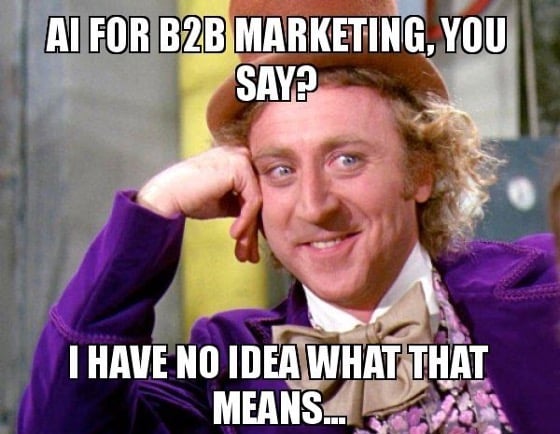


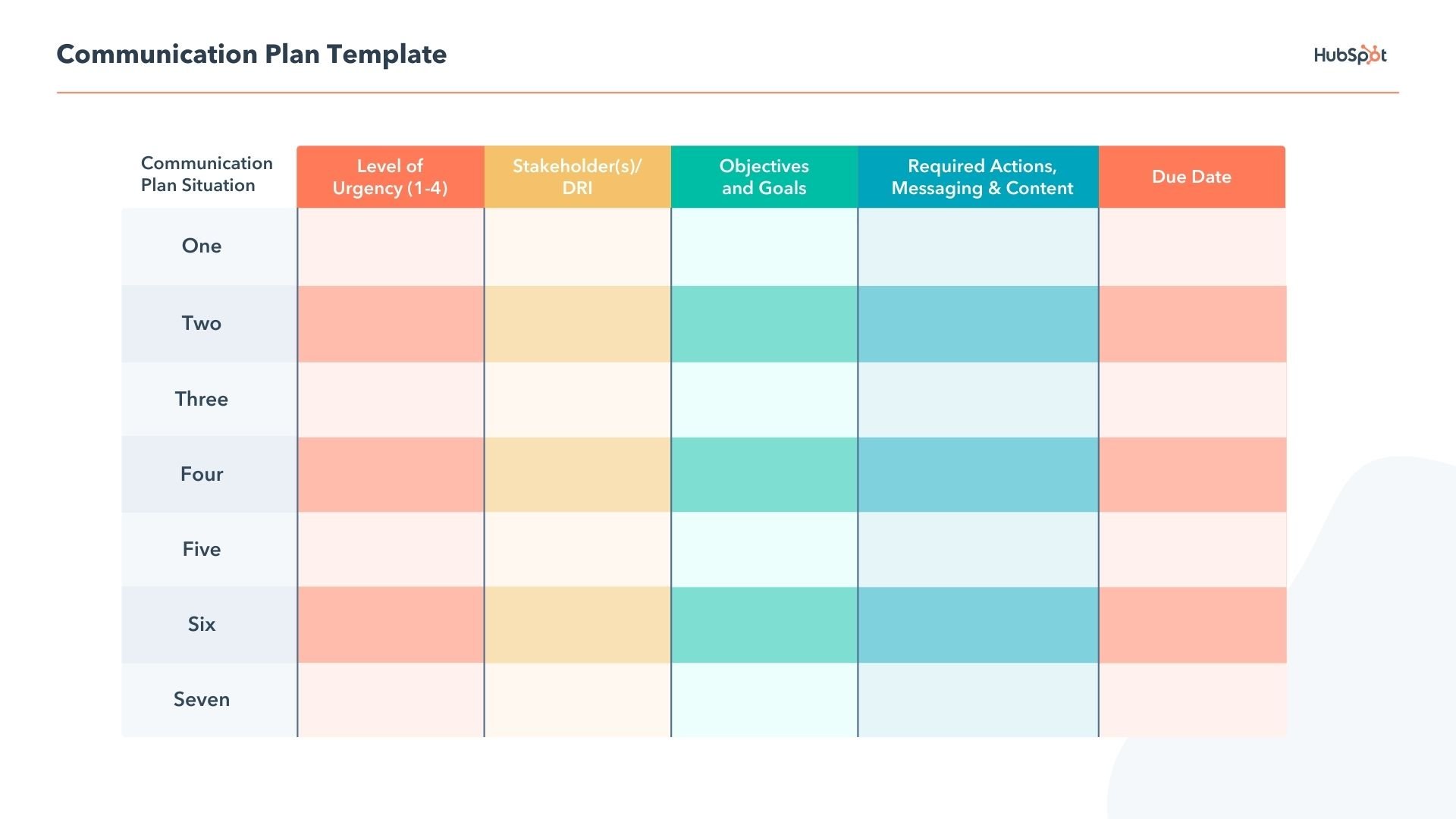
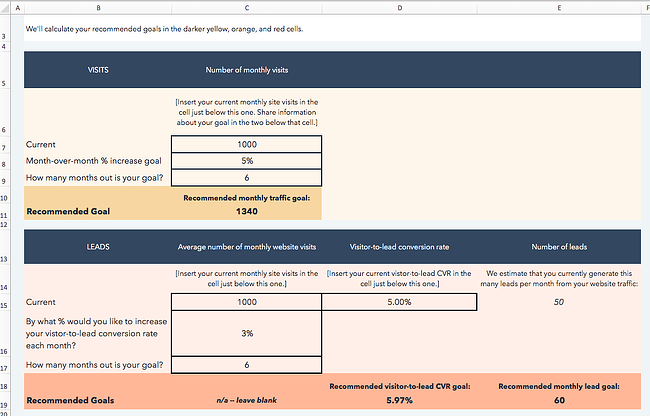
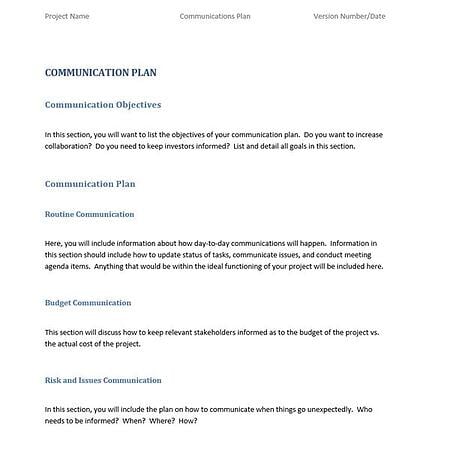
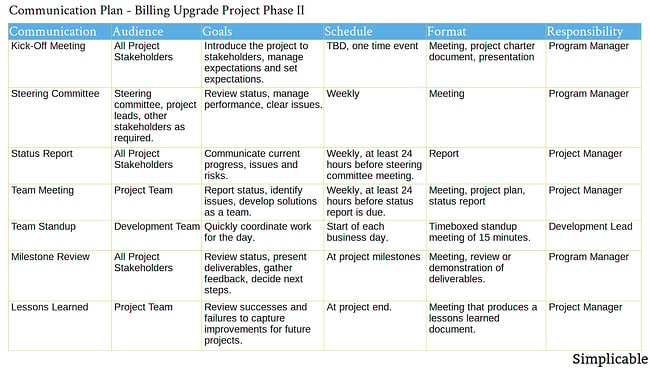
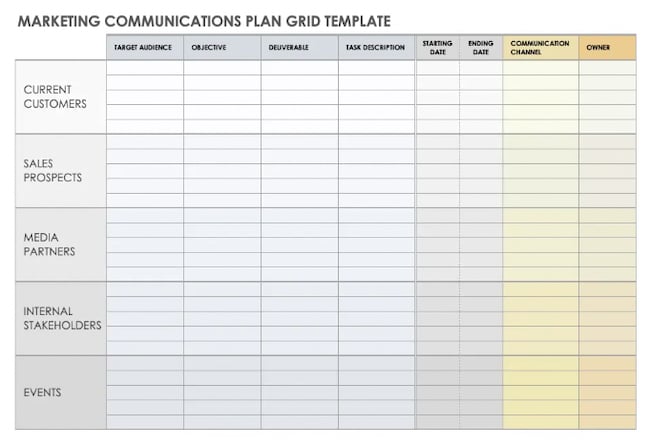
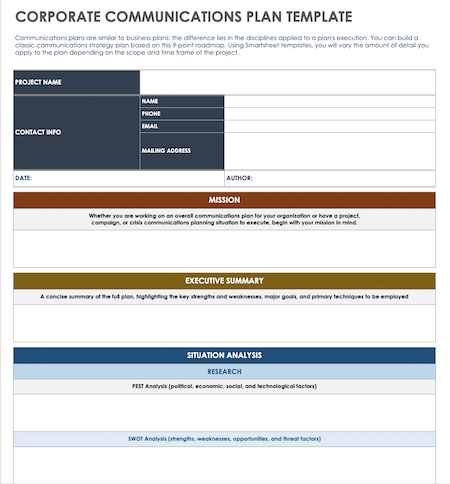
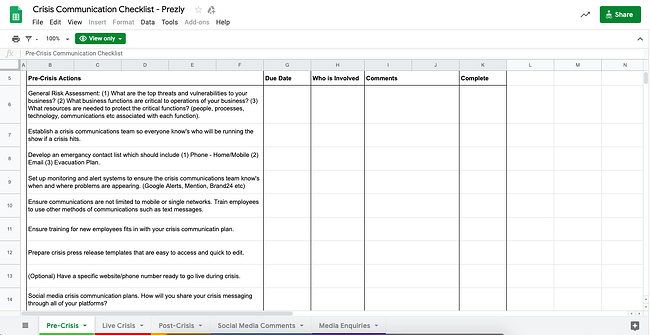
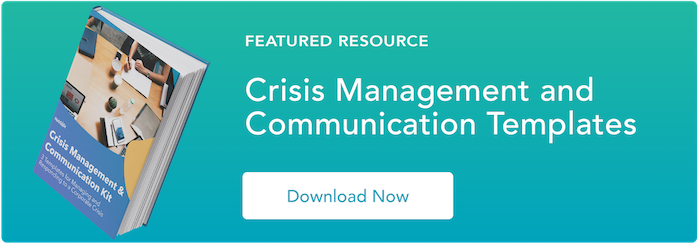








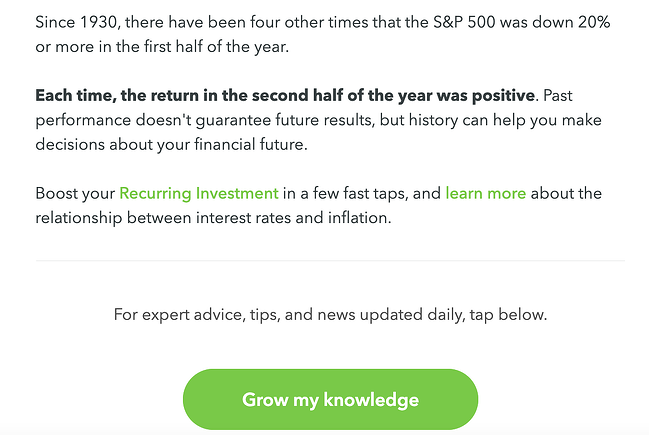



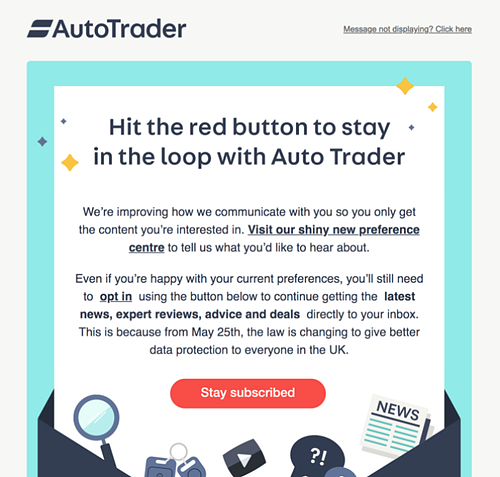
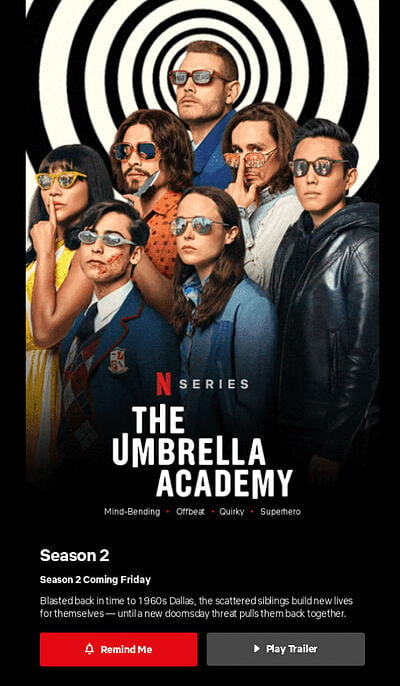
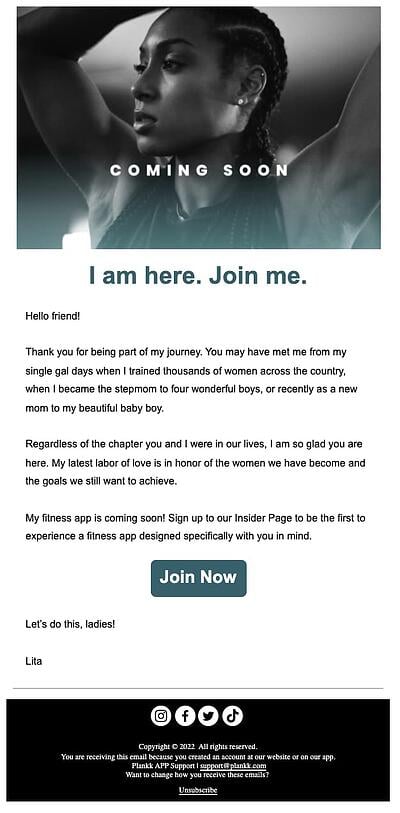
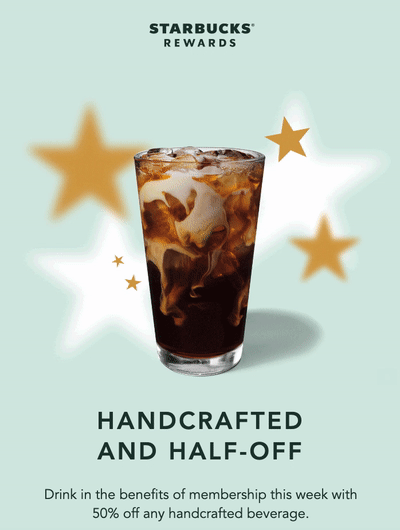
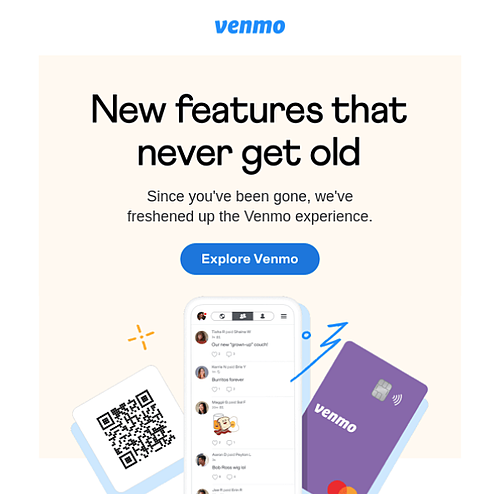
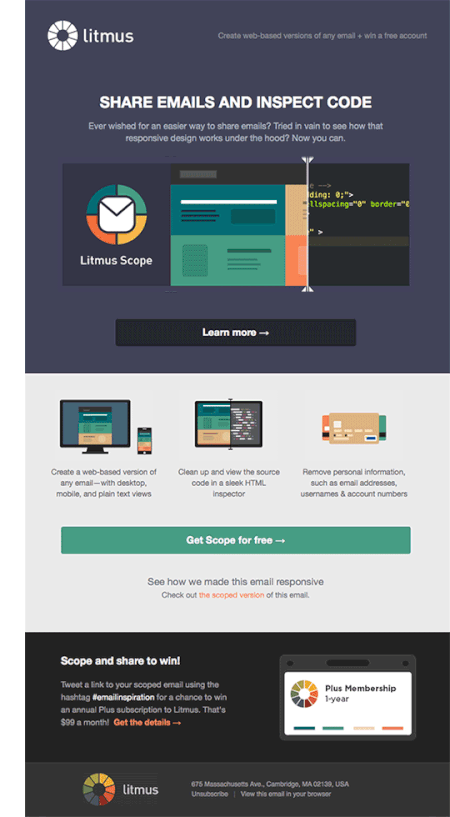
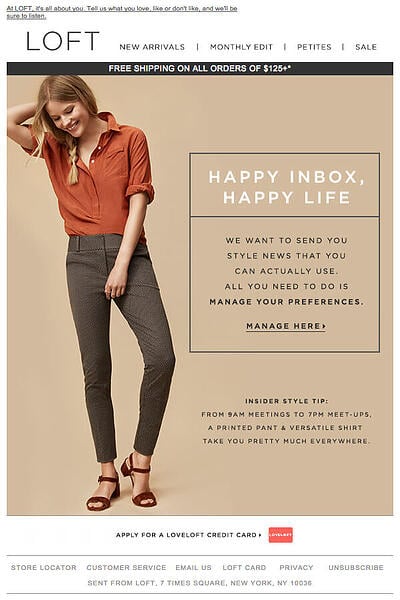


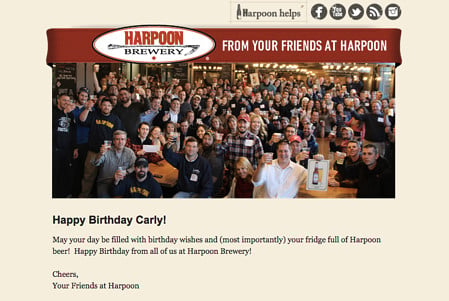
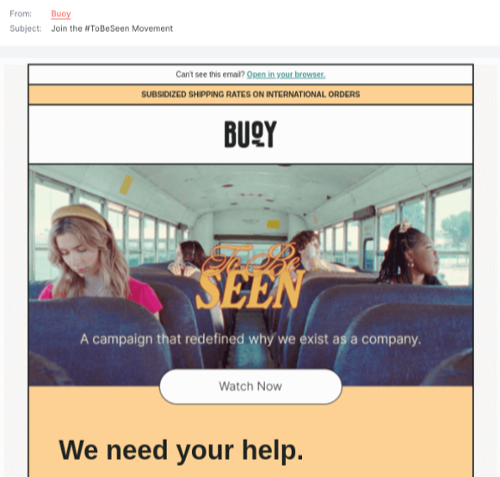
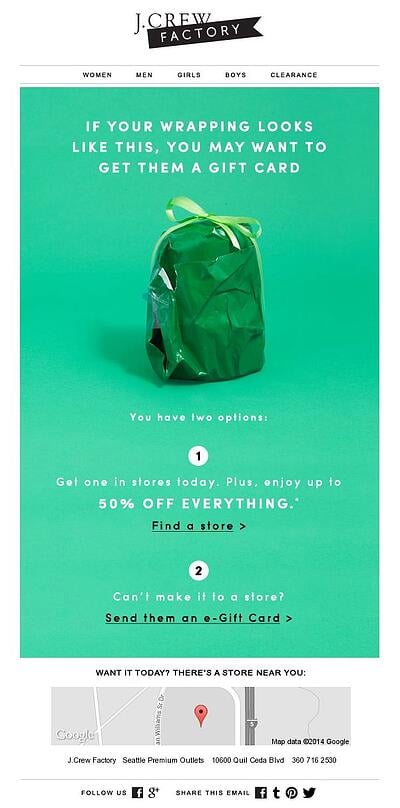


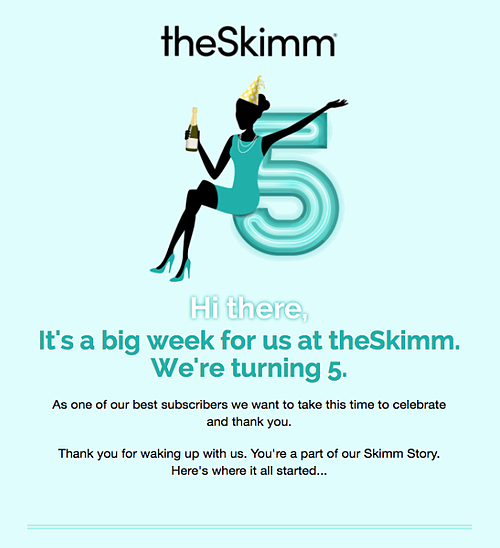

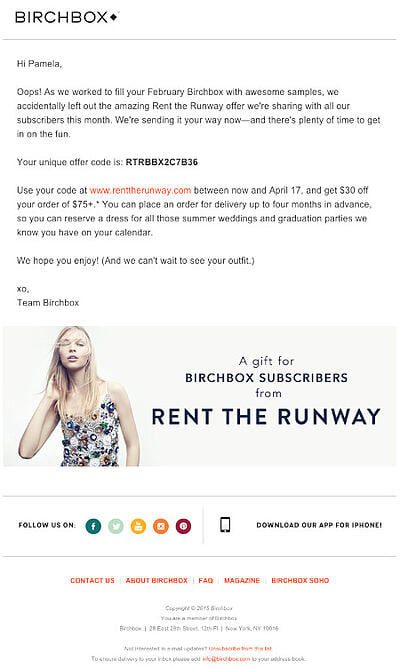

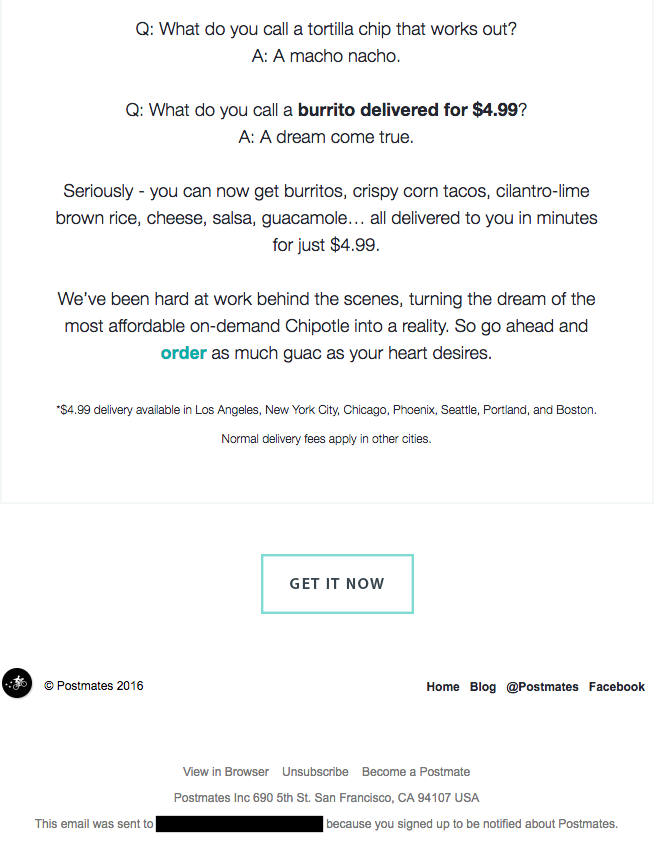
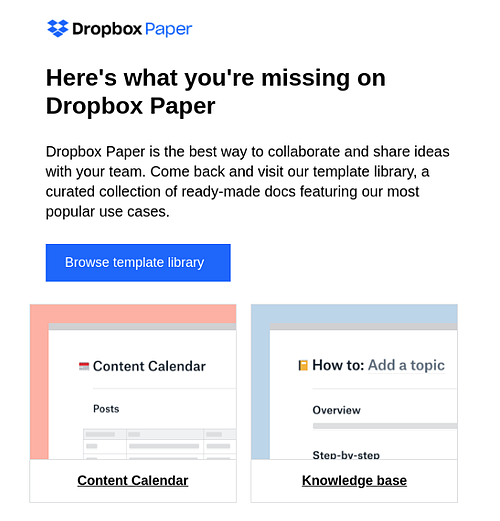

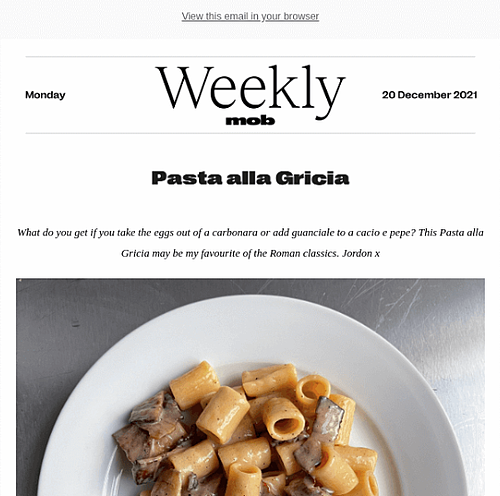
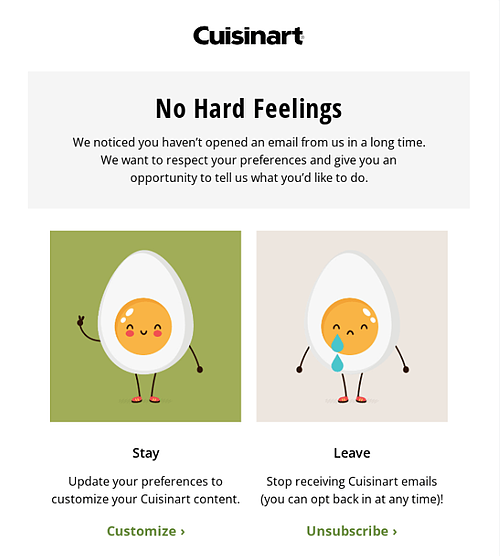


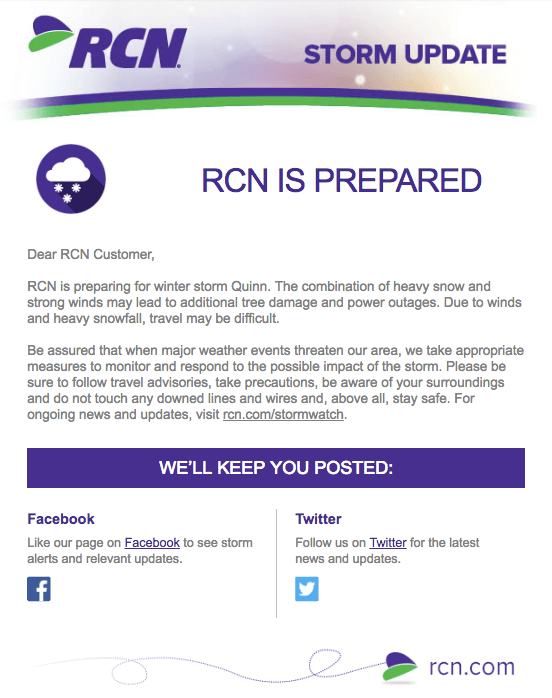
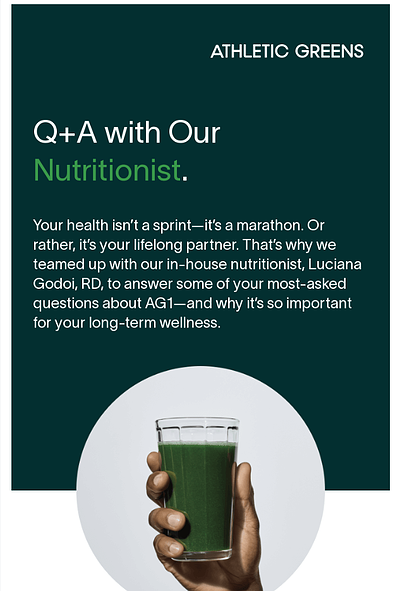


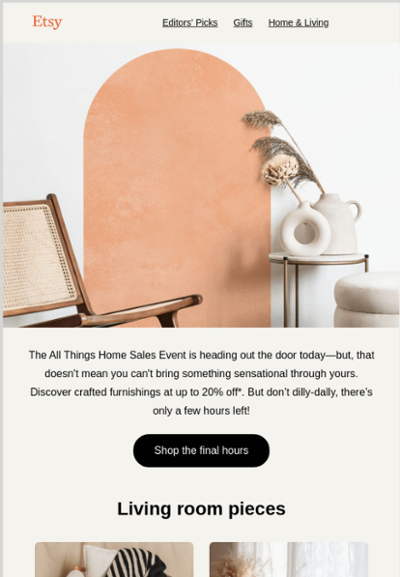
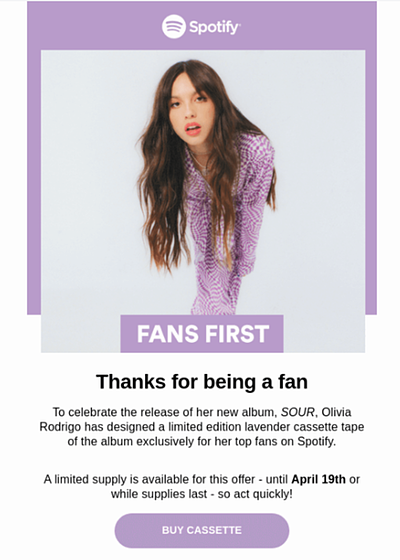
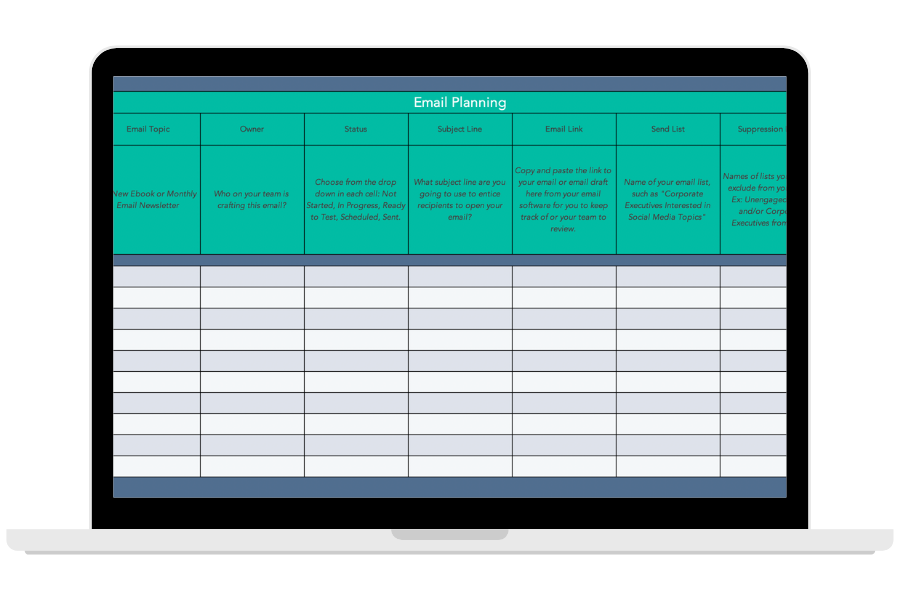


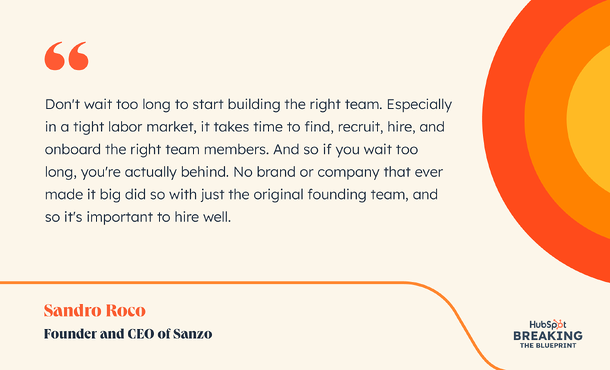
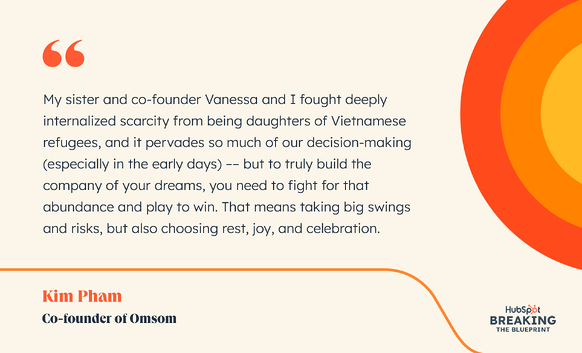
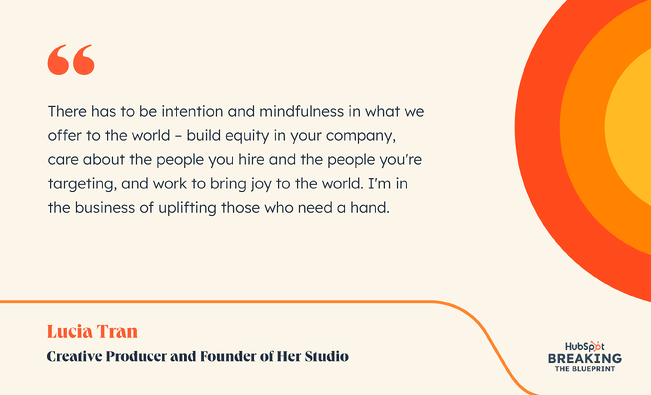
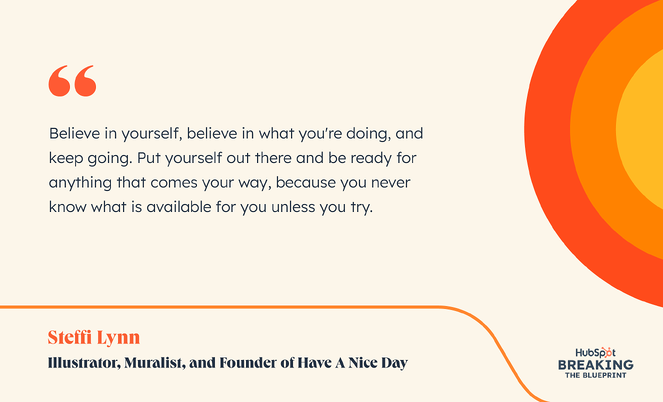



![Free Ebook: The Marketer's Guide to TikTok for Business [Download Now]](https://i4lead.com/wp-content/uploads/2023/01/2c7242e4-ad54-4f63-8627-a15aa6a2ea50.png)
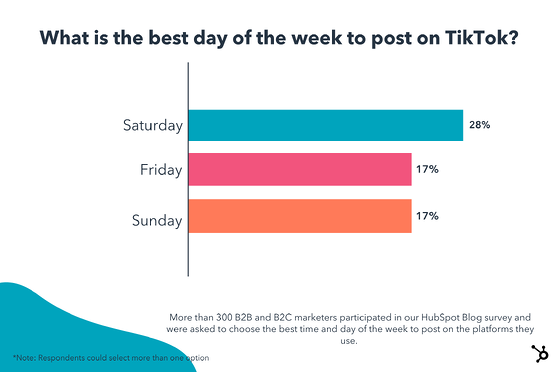
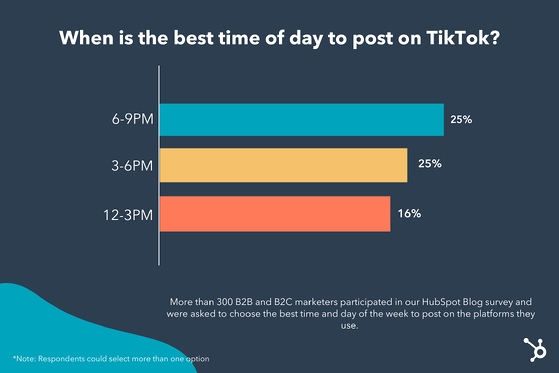
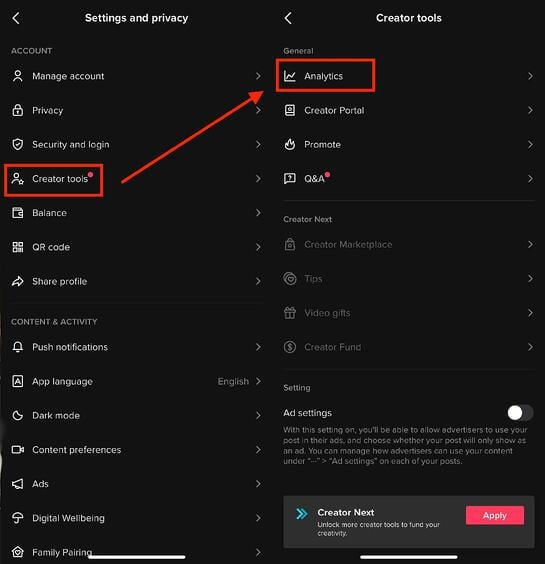

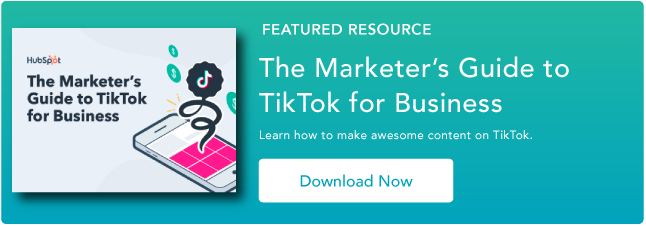




![Download Now: 100 Marketing Interview Questions [Free Access]](https://i4lead.com/wp-content/uploads/2023/01/9cd76457-ee12-40f6-b9d3-53674b1f7714.png)
